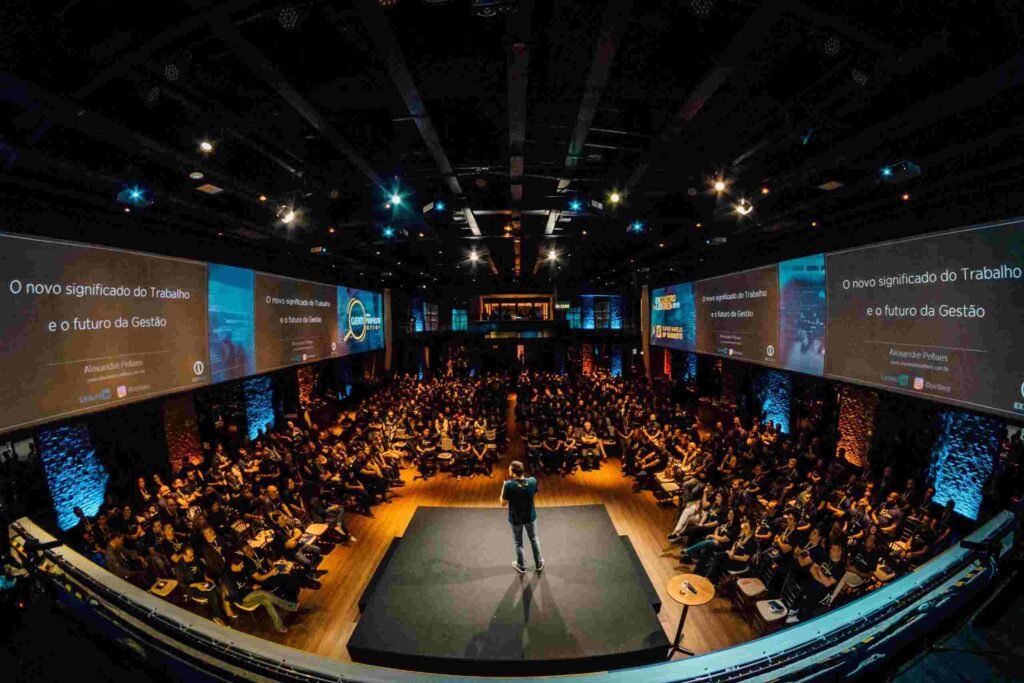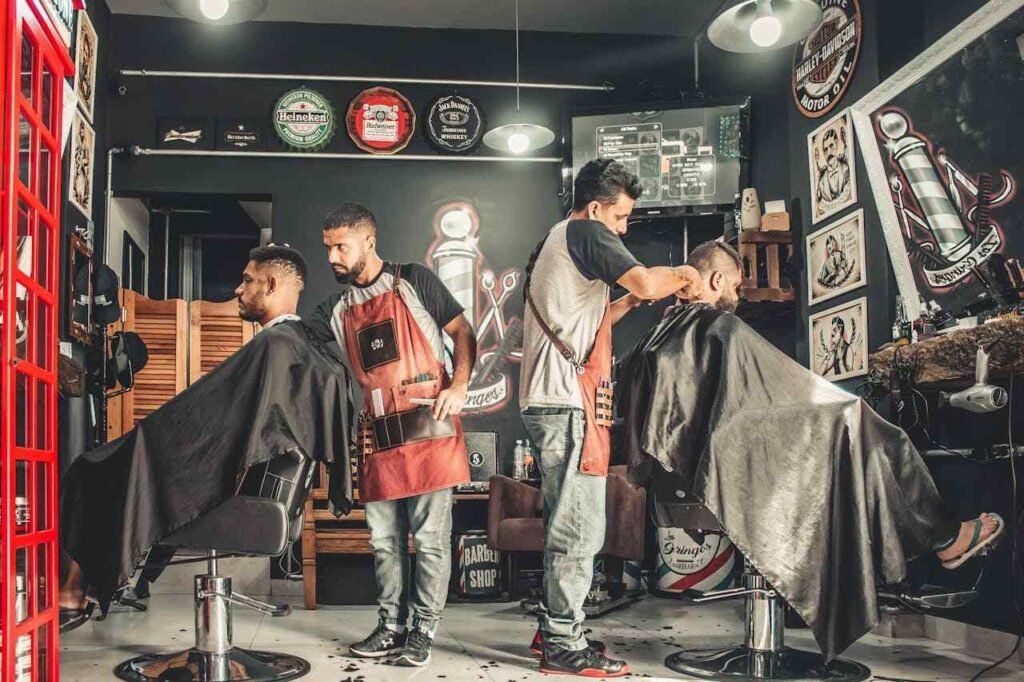In the world of digital marketing, influencer marketing remains one of the most impactful tools for reaching audiences, building brand credibility, and driving conversions. Yet, many brands are wary of the costs often associated with influencer partnerships. While major influencers and celebrity endorsements can come with a high price tag, there are ways to leverage the power of influencer marketing without breaking the bank.
This guide will walk you through cost-effective strategies and key influencer marketing trends, helping you get real results without excessive spending. By taking a smart, targeted approach, you’ll be able to tap into influencer marketing in a way that suits your budget and goals.
Start Small: The Power of Micro-Influencers
Why Micro-Influencers Deliver High ROI
While big-name influencers often command fees beyond most marketing budgets, micro-influencers provide a more affordable alternative with a surprising twist—they often deliver stronger engagement. Micro-influencers, typically those with between 1,000 and 50,000 followers, cultivate highly engaged communities and enjoy strong relationships with their followers. This trust translates into higher engagement rates, as followers view micro-influencers as relatable and authentic.
Micro-influencers’ audiences tend to be more niche, meaning you’re reaching people who are genuinely interested in the influencer’s content and, by extension, your brand. For example, if you’re selling eco-friendly products, partnering with a micro-influencer known for sustainability tips ensures your product reaches an audience that cares about environmental impact. Their endorsement carries significant weight, often leading to better conversion rates at a fraction of the cost.
How to Find and Approach Micro-Influencers
To find micro-influencers in your industry, start by looking on social media platforms like Instagram, TikTok, and YouTube, where many of them are active. Search for keywords relevant to your brand or hashtags related to your niche. Influencer search tools like BuzzSumo or Upfluence can also help identify influencers based on audience demographics and engagement levels.
When reaching out, approach micro-influencers with a clear, personalized message. Highlight why their values align with your brand and how your product could be a valuable addition for their audience. Offer a simple collaboration structure, such as a product-for-post arrangement or a modest fee. Micro-influencers are often open to flexible agreements, especially if your product genuinely resonates with their audience.
Tap into the Authenticity of User-Generated Content

Leverage Content That Speaks Directly to Your Audience
One of the most valuable trends in influencer marketing today is the emphasis on authenticity. Audiences are increasingly turned off by overtly promotional content, preferring influencers who share honest, relatable experiences. User-generated content (UGC) from influencers—photos, videos, or testimonials featuring real experiences with your product—resonates more deeply with followers than traditional ads.
Encourage influencers to share genuine stories or experiences with your product, rather than giving them a script. Let’s say you sell organic skincare. An influencer could post a morning routine video featuring your product, talking about how it fits into their lifestyle rather than simply listing benefits. This approach feels more genuine and attracts organic interest, as it looks like a natural part of the influencer’s life.
Repurpose Influencer-Generated Content for Multiple Channels
Once an influencer creates content for your brand, get the most out of it by repurposing it across your own channels. With the influencer’s permission, share their photos or videos on your website, social media pages, or even in email newsletters. UGC helps you build credibility because it showcases real people who enjoy your product.
For example, you might feature an influencer’s Instagram post on your own profile or turn a short video into an ad that runs on Facebook. Repurposing content allows you to stretch your budget and reach a wider audience without creating brand-new content. It’s an effective way to build a consistent brand story across different platforms, giving potential customers more touchpoints with your product.
Utilize Long-Term Partnerships Instead of One-Off Posts
Build Relationships with Influencers for Ongoing Engagement
One-time influencer campaigns may create a short burst of attention, but they often lack lasting impact. Instead, consider building longer-term relationships with a few selected influencers. These partnerships foster more authentic and consistent messaging, as followers see the influencer endorse your product over time.
For instance, rather than paying an influencer for a single post, arrange a three-month partnership where they share regular updates about your product. This approach helps build brand loyalty among the influencer’s audience, as repeated exposure reinforces the message that they genuinely enjoy and trust your brand. Longer-term relationships also give influencers the freedom to experiment with different content formats, increasing engagement.
Simplify Communication for Seamless Collaboration
Working with influencers over an extended period requires clear and open communication. Start by setting clear expectations for the collaboration, including posting frequency, content guidelines, and the type of creative freedom you’ll allow. Regular check-ins, but not micromanagement, keep the partnership running smoothly and allow for adjustments based on what’s working best.
For example, let the influencer know if you’re open to their input on creative ideas or if you’d like them to focus on a specific theme each month. Flexible collaboration makes it easier for influencers to share their genuine experiences, and it strengthens the partnership. Influencers are more likely to go the extra mile if they feel valued and trusted, adding more value to your brand in the process.
Choose Platforms Where Your Audience Is Most Engaged

Don’t Spread Your Budget Thin Across Too Many Channels
It’s easy to feel like you need a presence on every social media platform, but stretching your budget across multiple channels can dilute your impact. Instead, focus on the platforms where your audience is most active. Whether it’s Instagram, TikTok, YouTube, or even niche communities on Reddit or Pinterest, prioritize quality engagement over quantity.
For instance, if your audience skews younger, platforms like TikTok and Instagram may yield higher engagement. If you’re targeting professionals or a B2B audience, LinkedIn influencers could be more effective. Each platform has its own strengths and audience, so do some research to identify where your ideal customers are most likely to spend their time. Concentrating your efforts allows for deeper, more meaningful interactions with the audience that truly matters to your brand.
Experiment with Emerging Platforms
Emerging platforms can sometimes offer more affordable influencer marketing options, as they have fewer established influencers and brands vying for attention. TikTok, for example, was an affordable platform for influencer marketing in its early days, allowing brands to reach a large audience at a lower cost than Instagram. Keep an eye on newer platforms where early adoption could yield strong engagement without the premium cost.
For instance, if a new platform like Clubhouse (audio-based) or BeReal (photo-based) aligns with your brand’s messaging, test it with a small influencer collaboration. Early experimentation on these platforms can often bring high returns because influencers are eager to grow their presence and audiences are highly engaged. Being strategic about early platform adoption can give you an edge without requiring massive budgets.
Encourage Brand Ambassadors to Share Your Story
Turn Loyal Customers into Micro-Influencers
Sometimes, your best influencers are already in your customer base. Brand ambassadors are loyal customers who genuinely love your products and are excited to share their experiences with others. Since they’re already familiar with your brand, their endorsements feel natural and genuine, making them a valuable (and affordable) addition to your influencer marketing efforts.
Encourage satisfied customers to share photos, videos, or testimonials featuring your product. You could offer small incentives, like discounts or exclusive access to new products, in exchange for their content. This approach is cost-effective and builds a community around your brand, where real customers share their authentic stories.
Develop an Ambassador Program with Minimal Investment
If your brand has a solid base of dedicated customers, consider creating an ambassador program. Ambassadors act as unofficial representatives, sharing your brand with their own networks. While it doesn’t require a large investment, a well-structured ambassador program can increase your reach, as ambassadors actively promote your brand without the high costs associated with traditional influencers.
For example, create a simple structure where ambassadors receive a commission on sales they generate or earn points for each post they share. Keep the program low-cost by offering rewards that fit your budget, such as branded merchandise or exclusive product samples. An ambassador program allows you to expand your reach through genuine advocacy, building a community around your brand without major spending.

Related: Check out our free tools:

Focus on Niche Influencers for Highly Targeted Reach
Target Niche Communities for Greater Impact
Working with niche influencers—those who focus on specific, specialized topics—allows you to reach a targeted audience that’s more likely to be interested in your product. Niche influencers may not have millions of followers, but their followers are usually highly engaged and invested in the topic. For brands in unique or specialized industries, niche influencers are often a better fit than broader influencers.
For instance, if you sell vegan beauty products, look for influencers who focus on cruelty-free or eco-friendly beauty. Their followers are likely interested in vegan, ethical products, making them a more receptive audience. Niche influencers provide access to communities where your product feels natural and relevant, leading to higher engagement and stronger connections.
Partner with Niche Bloggers and Content Creators
In addition to social media influencers, consider working with niche bloggers, YouTubers, or podcasters. These creators often have dedicated audiences who trust their opinions. A blog post, video, or podcast episode focused on your product offers more in-depth exposure than a single social media post, allowing creators to share comprehensive reviews and demonstrate the product in action.
For example, a gardening influencer on YouTube can demonstrate how your eco-friendly garden tools work, sharing practical advice that resonates with their audience. A podcast host can mention your product within an episode, explaining how it adds value to their lifestyle. These long-form collaborations let influencers communicate more about your product’s benefits, building trust and interest over time.
Leverage Seasonal Trends for Strategic Collaborations

Time Campaigns Around Key Seasons and Holidays
Seasonal trends, such as holidays or back-to-school season, create natural opportunities for influencer marketing. By timing your campaigns around these events, you can tap into heightened interest and engagement without needing a large budget. Seasonal content is often more relevant and likely to engage audiences, as it aligns with their current needs and interests.
For instance, a fitness brand could collaborate with influencers to promote “new year, new you” products in January or back-to-school essentials in August. Seasonal campaigns feel timely and natural, making your product part of a larger conversation. When you coordinate campaigns around key seasons, you make your influencer marketing feel timely and authentic.
Encourage Influencers to Share Personal Holiday Traditions
During seasonal campaigns, invite influencers to share their own experiences or traditions that relate to your product. For example, a food influencer might share their favorite recipe using your ingredients during the holiday season. By making your product part of their personal story, you create an emotional connection with their followers.
Allow influencers to express their creativity and bring a personal touch to their content. When an influencer integrates your product naturally into their seasonal routine, the promotion feels authentic and resonates with their audience, leading to higher engagement and lasting impressions.
Build a Sustainable Influencer Marketing Strategy for Long-Term Success
Focus on Relationships Over Transactions
One of the most effective ways to sustain your influencer marketing strategy on a budget is to build genuine relationships with influencers rather than viewing each collaboration as a one-off transaction. When influencers feel valued, they’re more likely to go above and beyond, sharing your product because they genuinely enjoy it—not just because they’re being paid.
Invest time in nurturing these relationships. Send a personalized thank-you note after a campaign, offer them sneak peeks of new products, or feature their content on your own channels. Small gestures create loyalty, making influencers more willing to work with you again and recommend your brand organically. These long-term relationships save you from constantly scouting and negotiating with new influencers, creating a steady flow of authentic content at a lower cost.
Establish a Consistent Content Strategy with Influencers
Consistency is key to building brand recognition. Instead of sporadic campaigns, develop a calendar of regular influencer posts. This could mean monthly product shoutouts, seasonal promotions, or recurring content themes like “Wellness Wednesdays” for a health brand. A structured approach allows you to budget more effectively, ensuring you’re maximizing each influencer’s reach and impact over time.
For instance, if you’re working with a beauty influencer, arrange for them to feature your skincare line as part of their morning routine every few weeks. Regular appearances reinforce your product’s value, making it feel like an essential part of the influencer’s life and encouraging followers to see it as a trusted staple. A consistent strategy keeps your brand top-of-mind, building familiarity and trust without needing a huge investment in a single, high-profile campaign.
Track Performance and Continuously Optimize
To make the most of every dollar spent, it’s essential to track the performance of your influencer marketing efforts and adjust your strategy based on real results. Monitor metrics like engagement rates, click-throughs, conversions, and even customer feedback. By identifying which types of content or influencers deliver the best results, you can refine your approach over time, ensuring your budget is directed where it’s most effective.
Use tools like Google Analytics, Bitly, or even social media analytics platforms to track the impact of each influencer post. For example, if a certain influencer’s posts consistently generate traffic and conversions, you might prioritize working with them more frequently. Conversely, if another partnership isn’t delivering, adjust the content style or target audience to see if that boosts results. Constantly optimizing allows you to get more value from each influencer collaboration, stretching your budget while enhancing impact.
Leverage Creative Campaign Ideas for High Engagement at Low Cost

Encourage Challenges and Interactive Content
One of the most engaging (and budget-friendly) trends in influencer marketing is to create interactive campaigns, like challenges or contests. These campaigns encourage audiences to participate actively, building community and engagement around your brand. When influencers invite followers to join in on a challenge, it can boost organic reach and brand visibility without the need for costly advertisements.
For instance, a fitness brand could collaborate with influencers to launch a “30-Day Fitness Challenge,” encouraging followers to post daily progress using a branded hashtag. Interactive campaigns build momentum, as each new post adds to the buzz, expanding reach far beyond the influencer’s initial followers. This user-driven engagement not only increases visibility but also strengthens community, positioning your brand as an active part of customers’ lives.
Embrace Storytelling and Long-Form Content
Another trend gaining traction is using influencers to tell in-depth stories about how they use your product, especially through formats like YouTube videos, blog posts, or Instagram stories. Longer-form content allows influencers to showcase your product in a more detailed, immersive way, providing followers with deeper insight and creating a more compelling narrative.
For example, a cooking influencer might create a “Day in the Life” video showing how they use your meal-prep containers to keep ingredients fresh, share recipes, and stay organized in the kitchen. This storytelling approach turns your product into a part of the influencer’s lifestyle, making it more relatable and aspirational for their audience. By allowing influencers the freedom to create detailed content, you build a stronger connection with potential customers, often at a lower cost than frequent, one-off posts.
Offer Exclusive Discounts or Limited-Time Offers Through Influencers
Influencers can help drive conversions by sharing exclusive discounts or limited-time offers with their audience. Not only does this strategy create a sense of urgency, but it also makes followers feel like they’re getting a special deal by following the influencer. The influencer can use a custom discount code to track conversions, giving you valuable data on campaign performance.
For instance, if you’re launching a new product, collaborate with an influencer to offer a 10% discount code for their followers. The influencer can share their personal experience with the product while highlighting the limited-time offer, encouraging immediate action. This approach incentivizes purchases while keeping spending in check, as you’re paying primarily for conversions rather than upfront ad costs.
Encourage Influencer Feedback and Product Insights
Use Influencers as Product Testers
Influencers can offer valuable insights into how your products perform in real-world scenarios, and using them as product testers allows you to refine your offerings while building anticipation. By sending products to influencers before they’re officially launched, you gain feedback on any potential improvements. This feedback helps you fine-tune your product while also generating early buzz.
For instance, if you’re launching a new skincare product, select a few influencers to test it for a month and share their honest feedback with their followers. Their reviews can provide a genuine perspective on the product’s effectiveness, and followers who trust the influencer’s opinion are more likely to be interested in trying it themselves. This tactic creates an authentic review process, making the product feel credible before it even hits the market.
Gather Influencer Input on Campaign Ideas
Influencers know their audiences well, and they can often provide creative campaign ideas that resonate deeply with their followers. When planning a campaign, involve influencers in the brainstorming process and ask for their input. This collaboration gives them a sense of ownership, making them more invested in the campaign’s success and often resulting in more authentic content.
For example, if you’re planning a holiday-themed promotion, ask your influencers how they’d incorporate your product into their seasonal content. They might suggest a gift guide, a tutorial, or a holiday recipe that highlights your product in a natural, engaging way. Allowing influencers to contribute ideas not only strengthens the partnership but also ensures that the campaign feels genuine to their followers, driving higher engagement without the need for heavy-handed scripting or micromanagement.
Final Thoughts: Achieving High Impact on a Limited Budget
Influencer marketing doesn’t have to come with a massive price tag. By focusing on micro-influencers, user-generated content, long-term partnerships, and niche creators, you can achieve significant results without excessive spending. A strategic, targeted approach to influencer marketing leverages authenticity, engages your ideal audience, and builds brand loyalty—all while keeping your budget in check.
Remember, the key to cost-effective influencer marketing is quality over quantity. Focus on building relationships with influencers who genuinely align with your brand and can speak to your audience in a relatable way. By choosing influencers who naturally connect with your brand’s message, you’ll create campaigns that feel authentic, build trust, and drive real results.
With this approach, you can tap into the power of influencer marketing without breaking the bank. Embrace trends that suit your goals, work with creators who value authenticity, and continually optimize your efforts. Over time, you’ll create a sustainable influencer marketing strategy that fuels growth, connects with your audience, and stays within your budget.
READ NEXT:
- Are Vanity Metrics Killing Your Marketing Efficiency? Here’s What to Track Instead
- Pinpointing Digital Marketing ROI: Why Your Metrics Aren’t Telling the Full Story
- Unlocking Real ROI in Digital Marketing: The Hidden Costs Draining Your Budget
- How Misaligned Marketing Funnels Are Blocking Your ROI Potential
- Best Digital Marketing Agency In Santa Ana, California
- Best Digital Marketing Agency In San Francisco, California





















